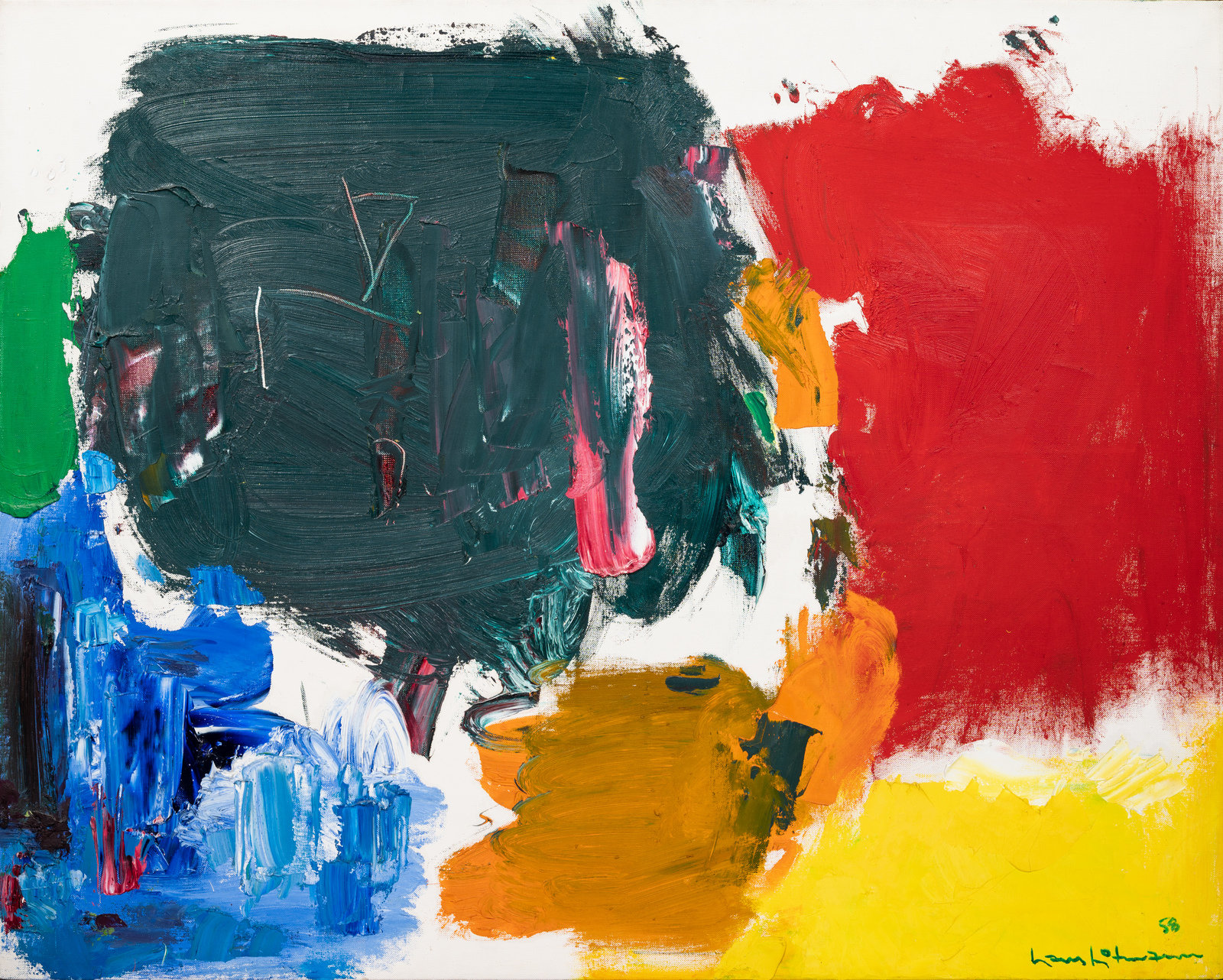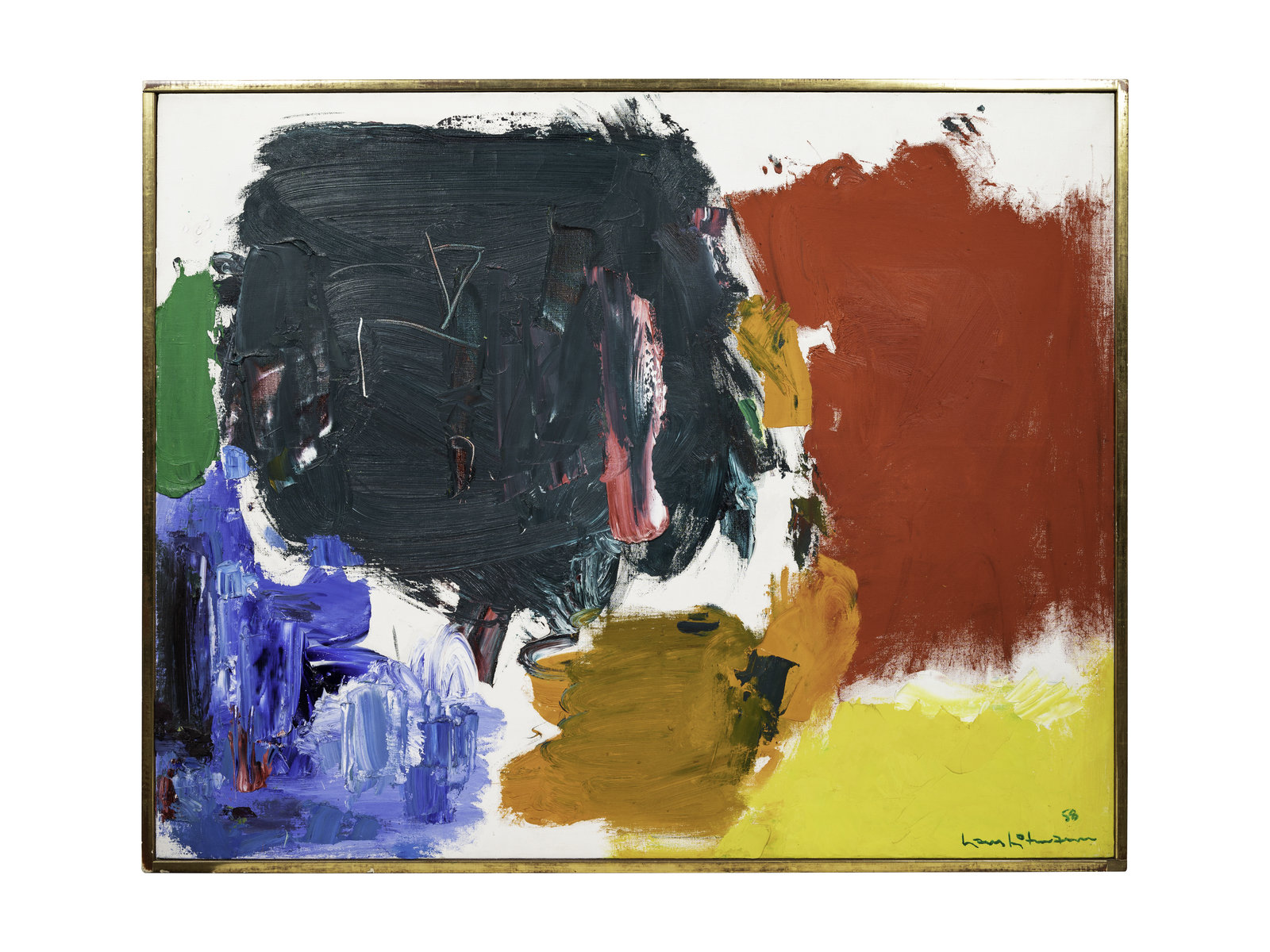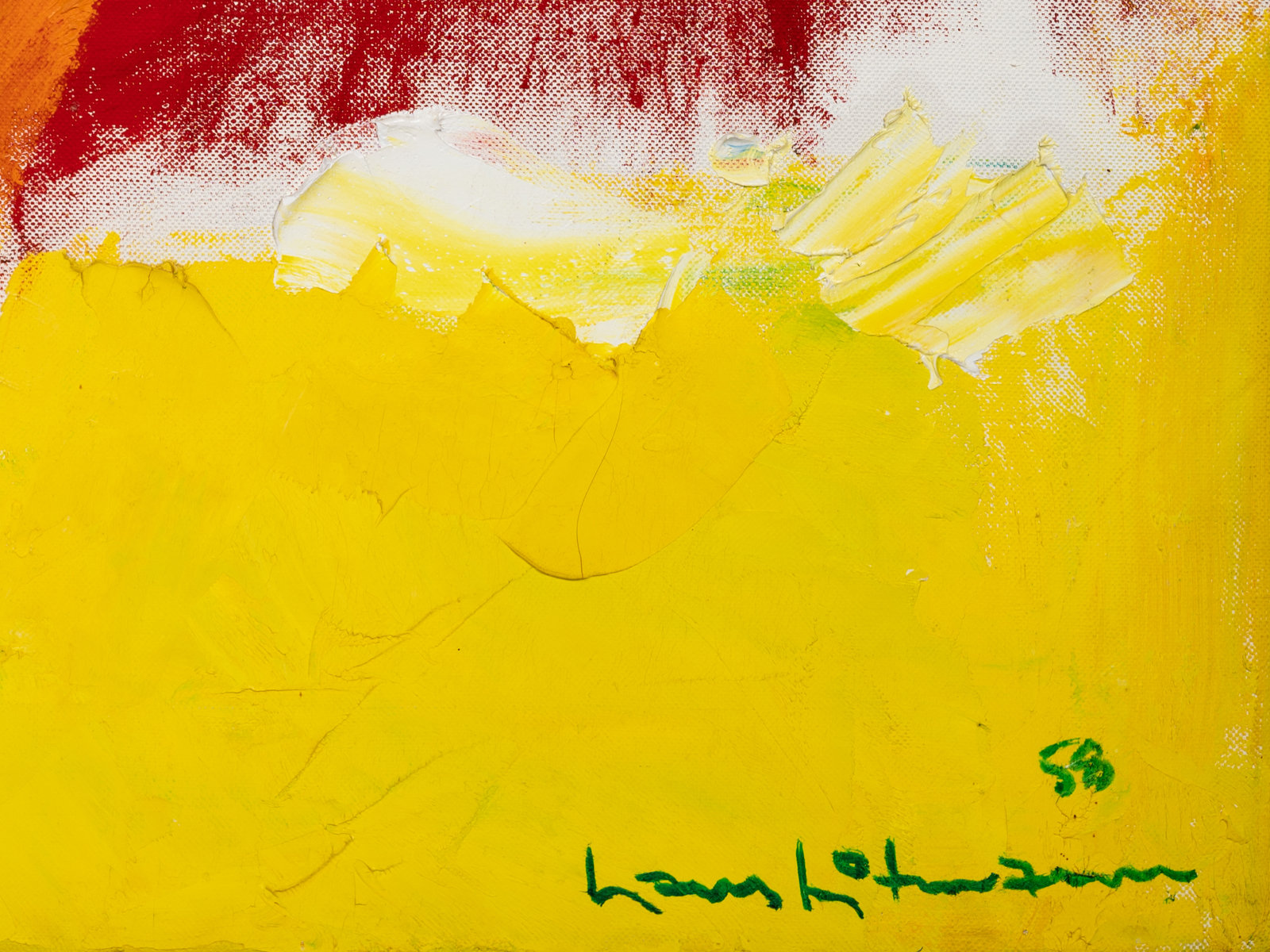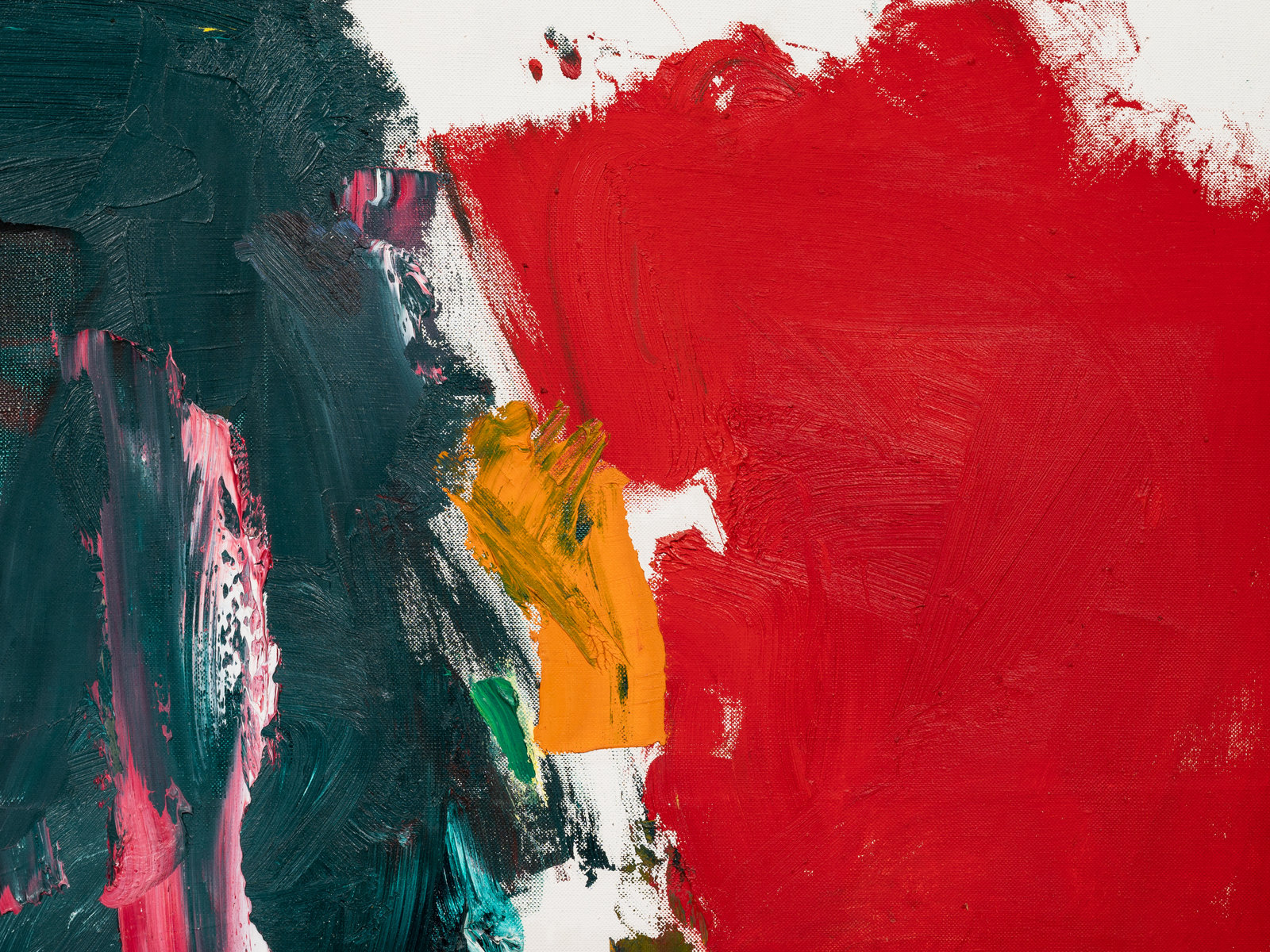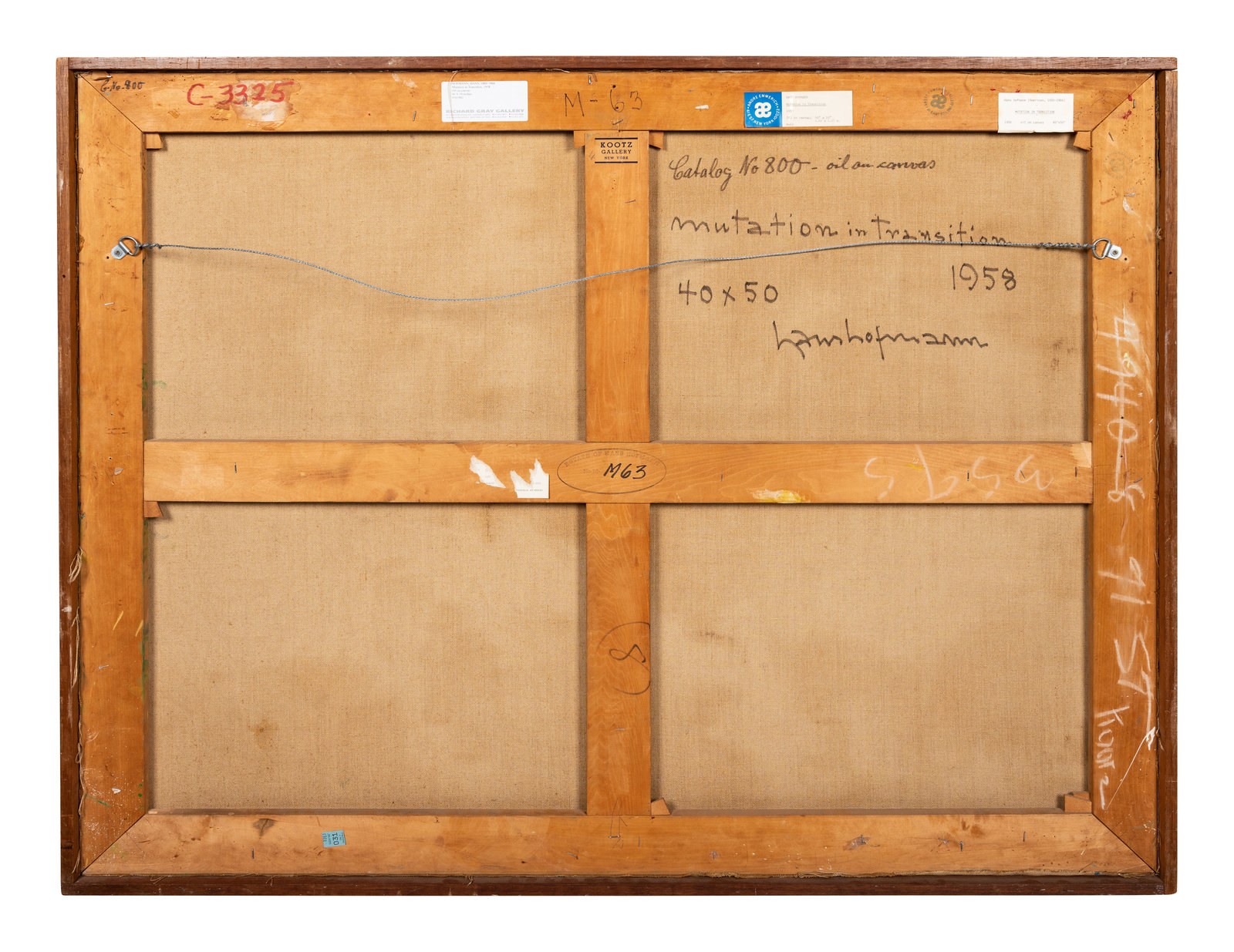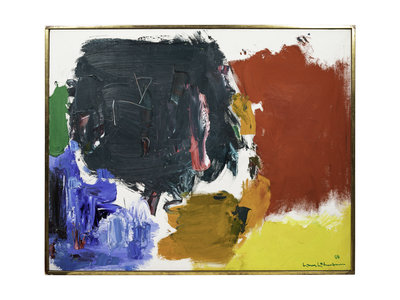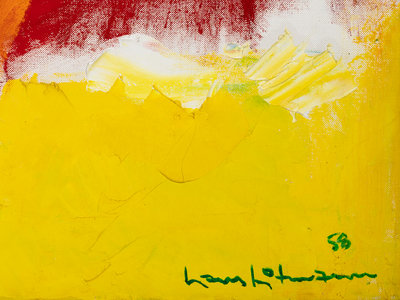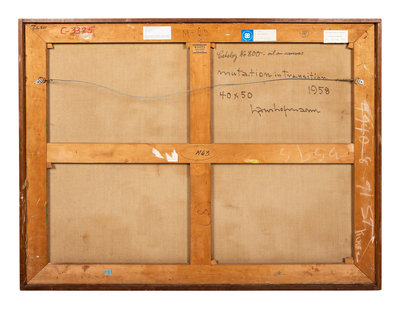Hans Hofmann
(American/German, 1880-1966)
Mutation in Transition
, 1958
Sale 907 - Post War and Contemporary Art
Sep 28, 2021
10:00AM CT
Live / Chicago
Estimate
$500,000 -
$700,000
Sold for $764,000
Sold prices are inclusive of Buyer’s Premium
Lot Description
Hans Hofmann
(American/German, 1880-1966)
Mutation in Transition
, 1958oil on canvas
signed Hans Hofmann and dated (lower right); signed, titled and dated (verso)
40 x 50 inches.
Property from a Private Collection, Illinois
Provenance:
Estate of the Artist, 1966 - 1988
Andre Emmerich Gallery, New York, 1988
Private Collection, 1988 - 2001
Richard Gray Gallery, Chicago
Acquired from the above by the present owner in 2001
Exhibited:
New York, Kootz, January 6 - 17, 1959
New York, Emmerich, 1968
Toronto, Canada, David Mirvish Gallery, 1974
New York, Acquavella Contemporary Art, 1978
New York, Emmerich, January 12 - February 6, 1980
Louisville, Kentucky, Martha White Gallery, 1981
Scottsdale, Arizona, Yares Gallery, 1983
Literature:
Sam Hunter, Hans Hofmann, pl. 89, illus.
Suzy Villiger, Hans Hofmann Catalogue Raisonne of Paintings, Volume III, 2014, no. P1092, p. 158, illus.
Lot note:
Vibrating with energy, Hans Hofmann’s Mutation in Transition, 1958, is a multifaceted dialogue between color, form, and medium. It is a striking example of the innovative techniques that has ensured the artist’s enduring legacy. Hofmann’s carefully built compositions, filled with large planes of energetic color and dynamic brushstrokes, express his belief in the spirituality of color. Painted at a high point in his career, the present work exhibits the artist’s revolutionary painting practice.
After nearly forty years of teaching, in 1958 Hofmann closed his New York and Provincetown schools. Hofmann’s new freedom allowed him to fully concentrate on his art and bring to fruition the “push pull” treatise in his paintings. In what has become perhaps his most famous dictum, the artist remarked, "Depth, in a pictorial, plastic sense, is not created by the arrangement of objects one after another toward a vanishing point, in the sense of Renaissance perspective, but on the contrary...by the creation of forces in the sense of push and pull" (quoted in S. Hunter, Hans Hofmann, New York, 1963, p. 14). Initially a student of science, the artist drew a parallel between painting and atomic physics, in which the reaction that transforms matter into energy can occur only if proper components are brought together in absolutely correct amounts. As Hofmann explained to his students in the early 1920s, static elements within the painterly composition could be animated through “…a balanced state of expansion and contraction…a positive produces a negative—a high, a low, a right, a left—a push a pull and vice versa.” (P. Morrin, “The Education of Hans Hofmann,” in Hans Hofmann: Catalogue Raisonné of Paintings, 2014, p. 33)
To achieve this “push pull” and the sense of three-dimensional space on the two-dimensional surface of canvas, Hofmann manipulated color contrasts to create light and movement. Mutation in Transition is an exuberant example of this experimentation. The hot, bright red and yellow pigments on the right give way to a scumbled, tumultuous orange and pink-tinged teal in the center, to pure blue and green in the left of the canvas. Everywhere the hand of the artist is seen, whether in the vigorous brushstrokes, the peaks and valleys of the dramatic impasto, or the aggressive ridges within the teal, likely created by the handle of a paintbrush. The encrusted surface is a sculptural record of Hofmann’s expressive force—energy transformed into matter.
The negative space of the white gesso that borders the pugnacious color blocks likewise accentuates the expanding and contracting forces within the composition. To Hoffman, the plane was the primary pictorial element of painting and he was heavily influenced by the orderly compositions of the Dutch painter Piet Mondrian. Hoffman’s application of thick paint stands out from the surface and emphasizes the planar nature of the canvas. Like Mondrian’s fixed planes of color, Mutation in Transition relies on the spatial relationship of varying shapes to construct a hierarchy of forms. Compared to Mondrian’s more static works, however, Hoffman’s bold colors emerge from and recede into energetic surfaces of intersecting and overlapping shapes that reflect his abstract expressionist values of color and line.
Through the gesture and action of painting, Hofmann sought a translation of the visual and spiritual experience of the forces of nature. He described a true work of art as an organism capable of a life of its own. The title, Mutation in Transition, itself hints toward this inner life, as if the colors are metamorphosing before our eyes. Birthed by the artist, it does not need to resemble or reproduce the outside world, but is a self-sufficient system with its own laws, harmony, and balance. Hofmann has formulated a new kind of painterly expression, one in which he incorporates gestural abstraction, independent planes to reveal depth and surface, and the audacious use of color and tonal contrasts to conjure pure and unbridled energy.
Condition Report
The physical condition of lots in our auctions can vary due to
age, normal wear and tear, previous damage, and
restoration/repair. All lots are sold "AS IS," in the condition
they are in at the time of the auction, and we and the seller make
no representation or warranty and assume no liability of any kind
as to a lot's condition. Any reference to condition in a catalogue
description or a condition report shall not amount to a full
accounting of condition. Condition reports prepared by Hindman
staff are provided as a convenience and may be requested from the
Department prior to bidding.
The absence of a posted condition report on the Hindman website or
in our catalogues should not be interpreted as commentary on an
item's condition. Prospective buyers are responsible for
inspecting a lot or sending their agent or conservator to inspect
the lot on their behalf, and for ensuring that they have
requested, received and understood any condition report provided
by Hindman.
Please email conditionreports@hindmanauctions.com for any additional information or questions you may have regarding this lot.
